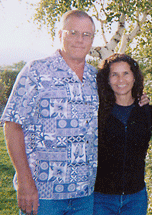A BRIEF HISTORY OF THE PLACENCIA PENINSULA
Placencia has a long history of occupation starting with the Maya who established at least 14 sites around the Placencia Lagoon. They were principally engaged in the making of salt as well as participating in the extensive coastal trade.
In the seventeenth century, Placencia was settled by the English Puritans who were originally from Nova Scotia and latterly from the island of Providencia. This settlement died out during the Central American wars of independence in the 1820's.
The Spaniards that travelled the southern coast of Belize gave Placencia its name. At that time Placencia was called Placentia,with the point being called Punta Placentia or Pleasant Point. The Placencia Peninsula was resettled in the late 1800's by the Garbutt family, who decided to settle and eventually own most of the Peninsula. In 1894 Abner Westby, whose family originated in Scotland, came to Placencia and purchased land from the Garbutts. He was later joined by a younger member of his family, John Eiley. The Cabral family, originally from Lisbon, Portugal, closed their business in Sao Paulo, Brazil and the Caribbean and sailed to the southern part of Belize on two schooners, The Colibri and The Jane. Soon they began doing business with and eventually married into the Placencia community. In the early 1900's the Leslie's, originally from Rotan, also came to Placencia.
Placencia prospered and soon became a village, earning its livelihood from the sea. On June 20th, 1962, the fishermen of the Village came together and formed the Placencia Produces Cooperative, which is still in operation today, to provide the village with competitive prices for their seafood production. In the early 1970's Placencia was provided with electricity (although sometimes less than 110V) from the generators of the Cooperative, and eventually in 1993 the Belize Electricity Limited assumed that role, providing 110V and 220V to supply the increasing demand.
Placencia is as culturally diverse today as it was in its formation. Walking down the sidewalk on any given day you will see and hear people from all over Belize and the world gracing our little village. The people here today are united in their love for the sea and in their commitment to tourism and development.
Since 1990, Placencia has made large and sure strides toward making it one of the most popular tourist destinations in Belize. Hurricane Iris that hit the village on October 8 of last year (2001) set Placencia back a bit but today Placencia is back on the track of tourism.
MAYA BEACH
Maya Beach is a small community located 8 miles north of the village of Placencia and stretches about 2 miles along the Placencia Peninsula. Maya Beach was a Canadian development founded in 1964. Today the community consists of many ex-patriots from America and Canada, along with Mayans, Spanish, and Creole.
Its layout offers water access from canal, lagoon, and beachfront. The lagoon side of Maya beach provides a panoramic view of Cockscomb Range and Victoria Peak.
SEINE BIGHT
Seine Bight village is located about 5 miles north of the village of Placencia and stretches about four miles along the Placencia Peninsula. It is one of six Garinagu communities in Belize. The name Seine Bight originates from the type of net, called a seine, used by the fishermen that used the area for drying and salting their catch and bight meaning a depression in the coastal line.
The inhabitants of Seine Bight are descendants of a people who originated in St. Vincent. These people who were the result of a mixture of Africans who had been intended for slaves and the local Carib Indians of St. Vincent. The Garinagu people had a long journey to reach the shores of Belize, being sent first to the island of Balliceaux, then on to Rotan before a group finally came to Belize. These arrived in Belize on November 19th, 1832. They settled in Seine Bight about the year 1869.
They were led from Riversdale by Emmanuel "Walpy" Moreira. Two other groups followed: John Martinez who settled in the southern area called Santuario, and Mateo Augustine who settled in the northern division called Augustine Ville. Many more came to the village in the 1950's when the Blair Atoll operation, which produced rice & copra, was closed down.
Seine Bight now has a population of over 800 people and is still predominantly a community of Garinagu. They speak English, but still maintain the Garifuna language, which is an African dialect with a strong mixture of French, Spanish and English words. Today they preserve their cultural drumming, dances and customs and welcome visitors to share their culture.
|





